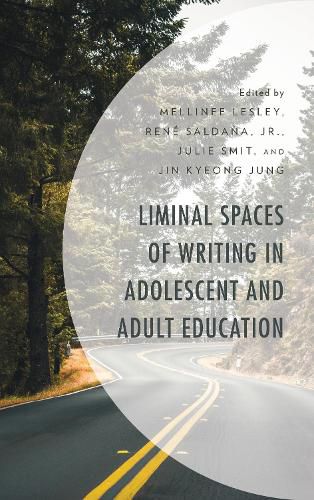Readings Newsletter
Become a Readings Member to make your shopping experience even easier.
Sign in or sign up for free!
You’re not far away from qualifying for FREE standard shipping within Australia
You’ve qualified for FREE standard shipping within Australia
The cart is loading…






Liminal Spaces of Writing in Adolescent and Adult Education addresses the persistent gap in writing reform at the middle, secondary, and post-secondary level. Through an examination of useful and liminal writing, the book explores the intellectual and creative space where structured expectations verge with individual imagination in writing. The premise of the book is built around a multiplicity of ways to invite adolescent and adult students to enter into states of liminality where they are encouraged to experiment with style, form, genre, and voice. Through research featuring the perspectives of adolescents, classroom teachers, teacher educators, graduate students, and literacy researchers, the book offers numerous insights into fostering a liminal and useful approach to writing instruction. Each author takes the reader through a journey of finding the liminal as teachers, writers, and researchers. Taken together, this tapestry of perspectives puts forth the argument that liminal moments are necessary caveats to explore in order to cultivate fully actualized writing where students are in control of structures and traditional writing expectations but also free to imagine new ways of breaking with conventions and being as writers. Thus, the book argues liminal writing is critical in bringing about sustained writing reform.
$9.00 standard shipping within Australia
FREE standard shipping within Australia for orders over $100.00
Express & International shipping calculated at checkout
Liminal Spaces of Writing in Adolescent and Adult Education addresses the persistent gap in writing reform at the middle, secondary, and post-secondary level. Through an examination of useful and liminal writing, the book explores the intellectual and creative space where structured expectations verge with individual imagination in writing. The premise of the book is built around a multiplicity of ways to invite adolescent and adult students to enter into states of liminality where they are encouraged to experiment with style, form, genre, and voice. Through research featuring the perspectives of adolescents, classroom teachers, teacher educators, graduate students, and literacy researchers, the book offers numerous insights into fostering a liminal and useful approach to writing instruction. Each author takes the reader through a journey of finding the liminal as teachers, writers, and researchers. Taken together, this tapestry of perspectives puts forth the argument that liminal moments are necessary caveats to explore in order to cultivate fully actualized writing where students are in control of structures and traditional writing expectations but also free to imagine new ways of breaking with conventions and being as writers. Thus, the book argues liminal writing is critical in bringing about sustained writing reform.